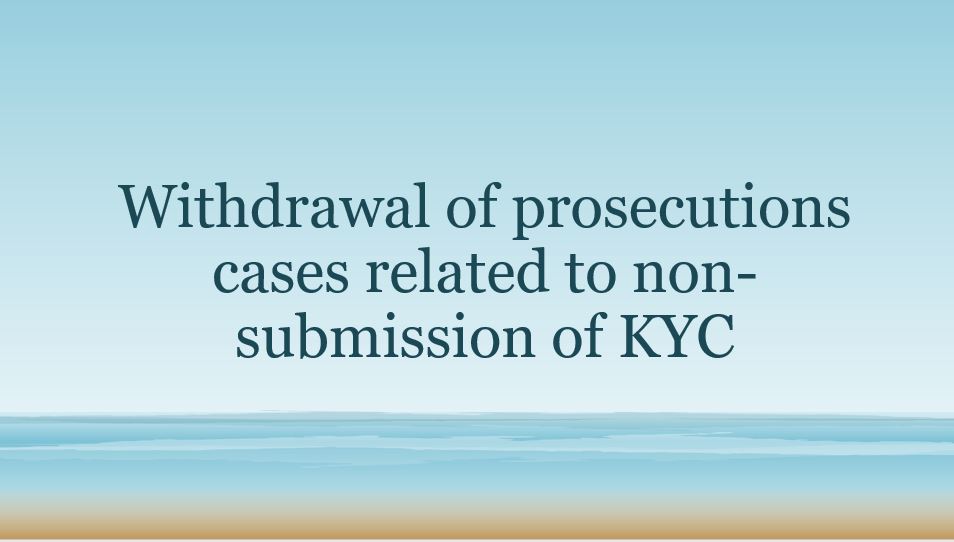
What is the differences between EPF, GPF and PPF?
EPF- Employees Provident Fund
GPF – General Pension Fund (GPF -Frequently Asked Questions Below)
PPF – Public Provident Fund
GPF – General Provident Fund which is for the Government Employees
PPF – Individuals can save to a maximum of Rs.60000/- in a year in the account. Account can be maintained in a Post Office.
EPF – Employees Provident Fund for Private sector where 12% of Employees share and 12 % of Employer’s share of Basic Salary + DA is deducted and remitted to PF Authorities
PF vs PPF: What’s the difference ?
1. What is PPF and PF?
EPF/ PF (Employees Provident Fund / Provident Fund)
The Employee Provident Fund, or provident fund as it is normally referred to, is a retirement benefit scheme that is available to salaried employees.
Under this scheme, a stipulated amount (currently 12%) is deducted from the employee’s salary and contributed towards the fund. This amount is decided by the government.
The employer also contributes an equal amount to the fund.
However, an employee can contribute more than the stipulated amount if the scheme allows for it. So, let’s say the employee decides 15% must be deducted towards the EPF. In this case, the employer is not obligated to pay any contribution over and above the amount as stipulated, which is 12%.
PPF (Public Provident Fund)
The Public Provident Fund has been established by the central government. You can voluntarily decide to open one. You need not be a salaried individual, you could be a consultant, a freelancer or even working on a contract basis. You can also open this account if you are not earning.
Any individual can open a PPF account in any nationalised bank or its branches that handle PPF accounts. You can also open it at the head post office or certain select post offices.
The minimum amount to be deposited in this account is Rs 500 per year. The maximum amount you can deposit every year is Rs 70,000.
2. What is the return on this investment?
EPF: 8.5% per annum
PPF: 8% per annum
3. How long is the money blocked?
EPF
The amount accumulated in the PF is paid at the time of retirement or resignation. Or, it can be transferred from one company to the other if one changes jobs.
In case of the death of the employee, the accumulated balance is paid to the legal heir.
PPF
The accumulated sum is repayable after 15 years.
The entire balance can be withdrawn on maturity, that is, after 15 years of the close of the financial year in which you opened the account.
It can be extended for a period of five years after that. During these five years, you earn the rate of interest and can also make fresh deposits.
Save tax and get rich
4. What is the tax impact?
EPF
The amount you invest is eligible for deduction under the Rs 1,00,000 limit of Section 80C.
If you have worked continuously for a period of five years, the withdrawal of PF is not taxed.
If you have not worked for at least five years, but the PF has been transferred to the new employer, then too it is not taxed.
The tenure of employment with the new employer is included in computing the total of five years.
If you withdraw it before completion of five years, it is taxed.
But if your employment is terminated due to ill-health, the PF withdrawal is not taxed.
PPF
The amount you invest is eligible for deduction under the Rs 1,00,000 limit of Section 80C.
On maturity, you pay absolutely no tax.
5. What if you need the money?
EPF – Employees Provident fund
If you urgently need the money, you can take a loan on your PF.
You can also make a premature withdrawal on the condition that you are withdrawing the money for your daughter’s wedding (not son or not even yours) or you are buying a home.
To find out the details, you will have to talk to your employer and then get in touch with the EPF office (your employer will help you out with this).
PPF – Public Provident fund
You can take a loan on the PPF from the third year of opening your account to the sixth year. So, if the account is opened during the financial year 1997-98, the first loan can be taken during financial year 1999-2000 (the financial year is from April 1 to March 31).
The loan amount will be up to a maximum of 25% of the balance in your account at the end of the first financial year. In this case, it will be March 31, 1998.
You can make withdrawals during any one year from the sixth year. You are allowed to withdraw 50% of the balance at the end of the fourth year, preceding the year in which the amount is withdrawn or the end of the preceding year whichever is lower.
For example, if the account was opened in 1993-94 and the first withdrawal was made during 1999-2000, the amount you can withdraw is limited to 50% of the balance as on March 31, 1996, or March 31, 1999, whichever is lower.
If the account extended beyond 15 years, partial withdrawal — up to 60% of the balance you have at the end of the 15 year period — is allowed.
Courtesy : rediff.com
GPF – FREQUENTLY ASKED QUESTION
1. What is a GPF Advance ?
GPF Advance is an interest free loan from your savings in General Provident Fund Account for specified reasons. You need to repay the same into your account in equated monthly installments. No interest shall be charged on the amount so taken as advance. However, you will not be paid any interest on GPF amount taken as advance. Such advances are covered under terms as per sub Rule (1) of Rule 12 of GPF (CS) RULES, 1960.
2. What are the reasons for which GPF Advance can be taken ?
One can take GPF Advance for the reasons of higher education of self, children, legal expenditure, religious vow, obligatory expenses towards betrothal, marriage and other like ceremonies, for purchase of consumer durables such as TV, VCR, washing machines, computers etc.
3. How many times in a year GPF Advance can be taken ? Is there any limit in the same during whole of our service?
One can take GPF Advance any number of times in our career. However, At least 4 months time gap will between two advances and 6 months time gap for withdrawals have to be maintained. The sanctioning authority, may relax this rule in exceptional cases depending on the merits of the application.
4. What is the maximum amount that can be taken as GPF Advance ?
The amount taken as GPF Advance at a time cannot exceed one-half of available balance or three months’ pay, whichever is less. The sanctioning authority may, however, permit advance in excess of this limit (up to 75 % of the available balance), in exceptional cases depending upon the merits of the application.
5. If I am still repaying the GPF advance taken earlier, can I take another GPF Advance ?
One can take another GPF Advance when an earlier advance is yet to be repaid completely. However, the amount pending from earlier advance and the proposed next GPF advance shall be consolidated and installments should be re worked and paid accordingly.
6. Is it possible to convert a GPF Advance to a part final withdrawal ?
Yes. A GPF Advance taken can be converted into part-final withdrawal, subject to the fulfillment of conditions / approval of the competent authority.
7. What is GPF Part-final withdrawal ?
GPF Part final Withdrawal means withdrawal of fund from your savings in GPF Account, for specified reasons. This amount need not repaid back to your account. The amount withdrawn shall stand debited from your account forever. Such withdrawals are covered under terms and conditions as per Rule 15 (1)(A) and (B) of GPF (CS) RULES, 1960.
8. What are the reasons for which GPF Withdrawal can be made ?
One can make GPF withdrawal for the reasons of higher education of self, children, legal expenditure, expenses towards betrothal, marriage, purchase of consumer durables such as TV, VCR, washing machines, computers etc. Moreover, withdrawal can also be made for purchase or construction of house, repairs or renovation of house etc. If the applicant has less than 12 months to retire, there is no need to give any reason for withdrawal.
9. Is there any qualifying service ( or minimum length of service) for an employee to make withdrawal from fund ?
Yes. As per Rule 15 (1)(A) of the GPF Rules, the applicant should have completed 15 years of service, or should have less than 10 years to retire, as the case may be for making withdrawals.
10. Are there any chances of making withdrawal even if the applicant does not posses the qualifying service ?
Yes. As per Rule 15 (1)(B) of the GPF Rules, for purchase of a ready built house/flat, purchase of housing site and/or construction of a house, repairs, reconstruction of housing property already owned by employee, and / or for repaying any loan expressly taken for the above purposes etc. the condition of qualifying service does not apply.
11. Should we submit any utilization certificate or completion certificate after taking GPF withdrawal ?
Yes. One has to furnish a certificate that the amount withdrawn from GPF have been utilized for the purpose for which it was taken. In case of failure to do so, sanctioning authority may recover the entire advance from the pay in one lump, or in as many instalments he decides fit.
12. What is the maximum amount that can be withdrawn from GPF ?
The amount withdrawn from GPF at a time cannot exceed one-half of available balance or six months’ pay, whichever is less. The sanctioning authority /Head of the Department may, however, permit an advance upto 75% of the available balance, in exceptional cases depending upon the grounds of application. The withdrawal upto 90 % of the available balance is permitted in case of purchase/construction of house / arranging marriage of son or daughter etc.
13. How the rate of interest for GPF is fixed?
Rate of Interest for General Provident Fund is fixed every year by the Government. The present rate of interest is 8%.
14. Whether deposits made in General Provident Fund is exempted from attachment?
In terms of Section 60(1) of Civil Procedure Code, 1908 Deposits made in General Provident Fund has got immunity with regard to attachment under a decree or order of a court of law.
15. Whom should be we nominate for receiving the amount remains in our GPF account after our death ?
Every government servant should submit nomination in the prescribed form immediately on joining the Fund. While an employee not having family may nominate any other person, the nomination should be in favour of family member(s) only in the case of one having family. The subscriber may provide in the nomination that the nomination shall become invalid in the event of the happening of a contingency specified therein e.g. a bachelor may nominate his father or mother. He can specify in the nomination that the nomination will become invalid in the event of his subsequently getting married. If the nomination is made in favour of more than one person, the proportionate share in which the amount will be payable should be specified clearly in the relevant column. At any time, the nomination may be canceled by the government servant.
16. Who are all our family members as per General Provident (CS) Rules 1960 ?
‘Family’ includes, spouse, parents, children (including adopted child/ward), minor brothers, unmarried sisters, deceased son’s widow and children and where no parents of the subscriber is alive, a paternal grandparent.



Note
PPF:- minimum yearly deposit is Rs. 500 and maximum 1.5 lac (w.e.f. August 2014) please correct it
Minimum 6% of Basic Pay should be deducted for GPF
WHAT IS THE LEAST AMOUNT THAT CAN BE MONTHLY DEDUTED FROM SALARY FOR GPF CONTRIBUTION
sir, how gpf intereset is calculated. please let me know.
What is CPF? not CP.. sorry
What is CP?There is CPF scheme in our central autonomous body (institute) and they are deducting 10% and adding 10% from institute side,please tell about this
I got the clarification on GPF, PPF and EPF today, thanks a lot.
So far, i was unable to make difference between EPF and PPF. U gave me a clear understanding to differentiate these. Thanks a lot.
thank you so much for giving guidance on gpf, epf and ppf as a number of individuals are not aware of these rules. a similar guideline is requested on direct tax code 2011.